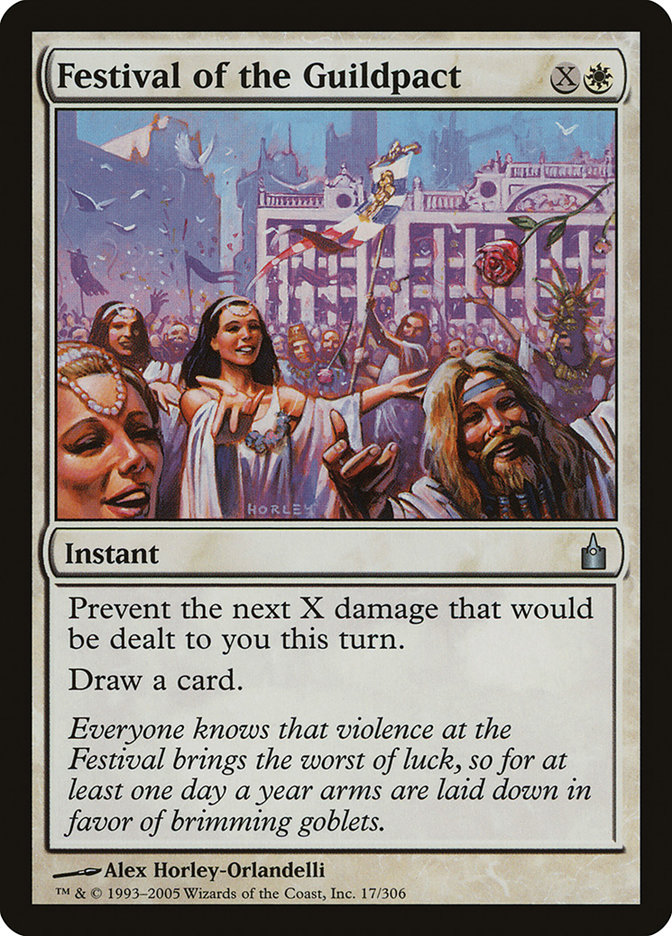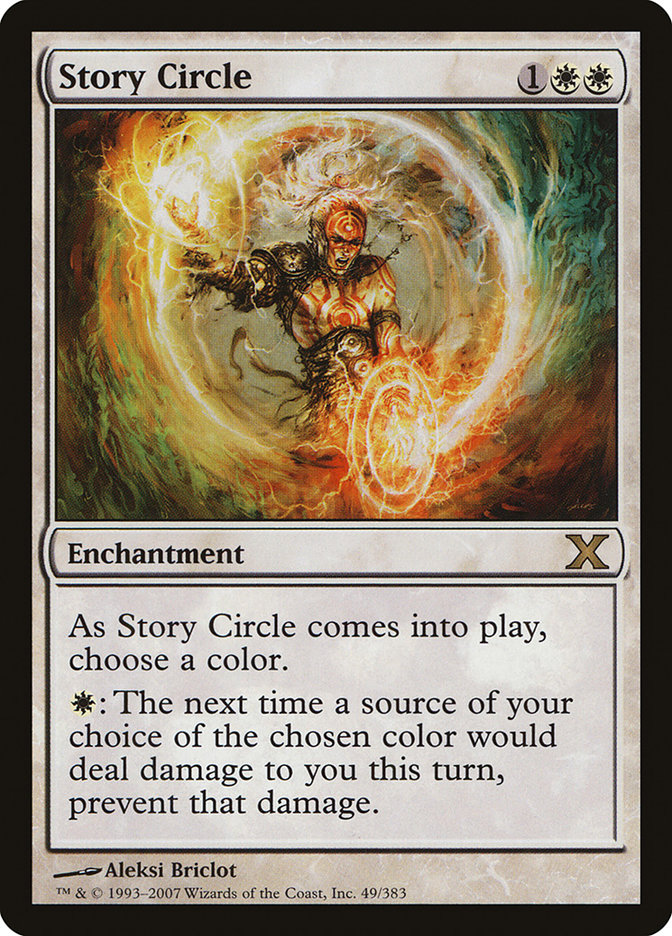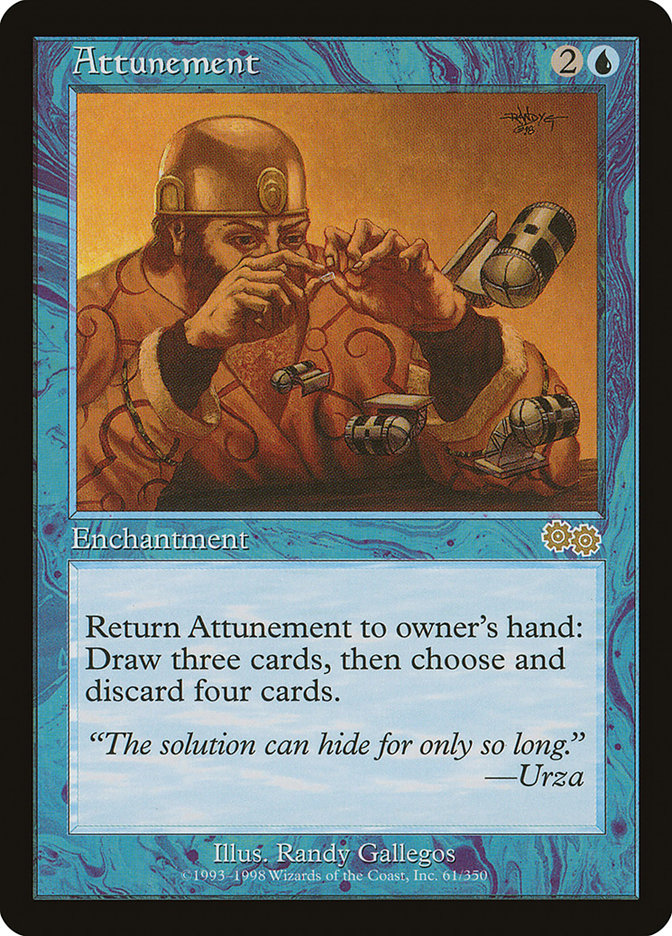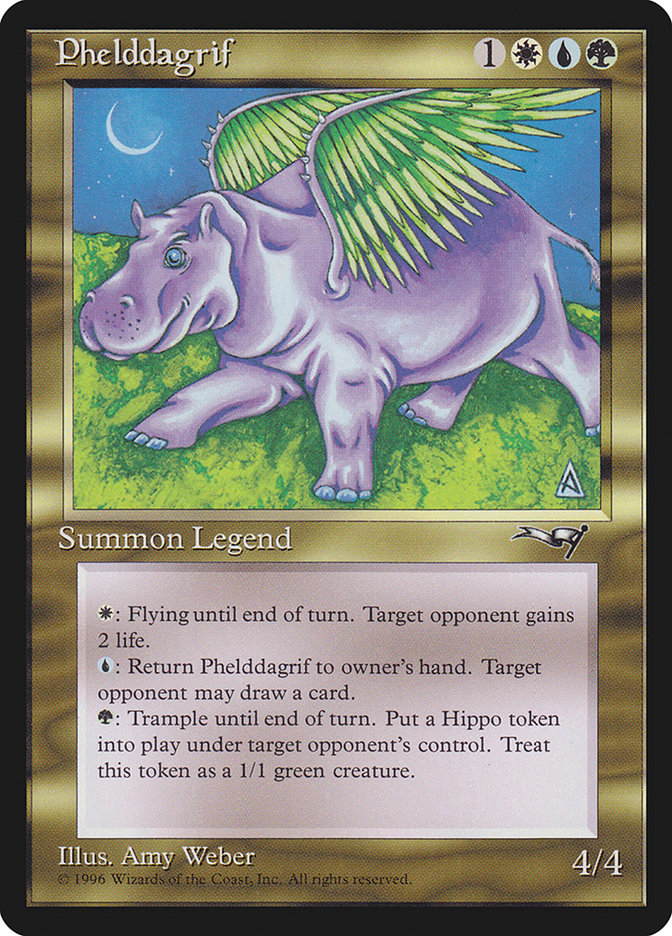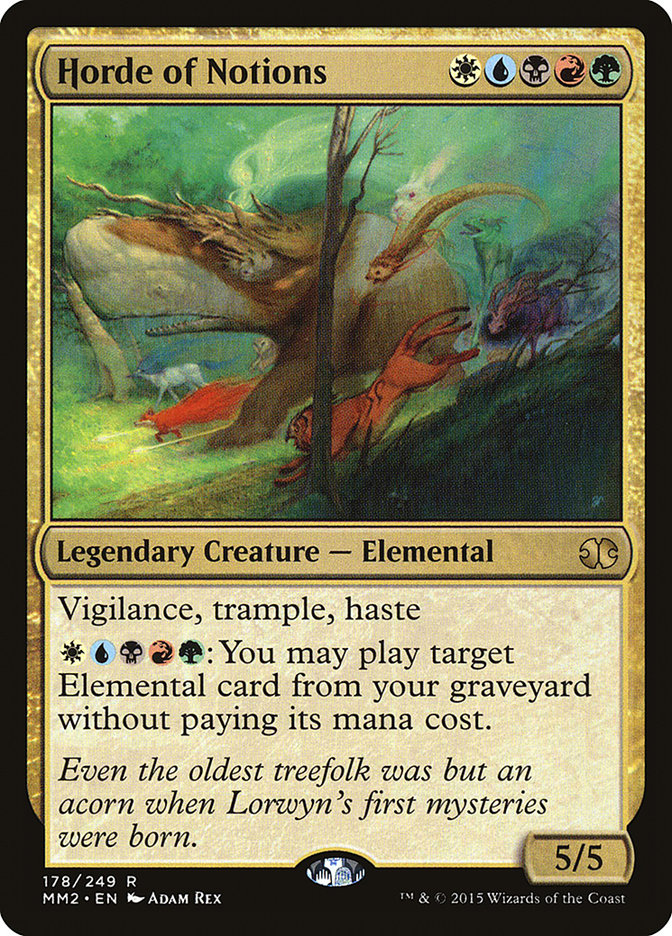One of the strengths of and major reasons for the popularity of Commander as a format is that its goals are unlike those of any other format. Sure, it’s a game, and games in which players are each other’s opponents have winners, but for Commander, the idea of winning takes on a number of additional dimensions. Such a divergent path creates a potentially broader experience than those offered not just by other formats but other games. What we’ll explore today is what winning looks like in Commander. I crowd-sourced some answers to this question in the Facebook group Magic: The Gathering EDH-Commander; I’ll add a few of the responses along the way to help illustrate my points.
The obvious first way to win is by the rules of Magic. On the surface, this seems pretty simple and might not warrant extended conversation. After all, there are victory conditions written right into the rules of the game.
That’s not the whole story, though. Despite the fact that Magic can be played as a multiplayer game and there are now multiplayer portions written into the Comprehensive Rules, it’s intended as a two-player game—meaning there’s a winner and a loser. By contrast, there are different flavors of winning a multiplayer game. Simply being the last person standing is the generally accepted and most popular method, but that’s not completely satisfying to some players. After all, why should the last person in the game win when someone else eliminated more other players? There are points systems, alt-victory conditions, and other variants.
One of my favorite five-player variants is the star formation, in which the two people sitting next to you are your allies and the other two are your enemies. You win when your two enemies are eliminated, which can create situations in which multiple players win. You can’t attack your allies and they don’t count for cards which mention opponents. Having a common ally with someone who is your enemy creates some interesting political situations—you might want to eliminate that particular player, but doing so might win the game for someone else.
My most salient point here is that this first way is the least important. Clearly, once you lace up the cleats and step between the chalk lines, you want to do as well as you can. For me, that’s secondary to the other ways of winning. I certainly don’t feel as though I’ve won anything in a game in which I didn’t do anything or have an opportunity to get involved, but I’m fortunate enough that none of my local players enjoy turn 3 combos or any kind of hardcore prison decks. Most of the games in which I participate, I also get to play, if you will. This was a comment sentiment in the FB group.
Gregg Hoge simply says, “I never mind losing a game; I just hate being a spectator in the games I’m supposed to be playing.”
Kevin Tran adds, “It’s when there are almost no factors holding any player back, and they play at their peak, leading up to the ultimate playing experience.”
Sarah Hackett homes in on one of the anxieties we all feel: “It also includes actually being able to play instead of being mana screwed.” This why in our local games, we play with fairly liberal mulligan rules. We know no one is going to abuse them (which is why our rules are likely untenable for larger audiences), and we’d rather everyone in the game from the start.
Chuck Butera does a great job of summarizing how many Commander fans approach playing the game: “Winning is playing my deck to its full potential. Keeping the opponents on the defense the entire game. Setting the pace, and having a lot of control over situations. If I happen to seal the win then even better, but I consider it a success if I can do these things.”
What “winning by the rules of Magic” means is different to different people and groups. To some, all bets are off—if the format’s rules make it legal, then those fast combos are legit. I believe that sentiment to be mostly a carryover from two-player Magic, where all (legal) things are indeed fair game. Other folks want a more slowly played-out experience. This is the part of winning which leads to the most anxiety among players of Commander, since people even within the same local group can have radically different ideas of what “fair” is. So while, all in all, “winning by the rules of Magic” might seem an uncomplicated idea, it can be anything but in Commander. As with many other things in life, a little honest communication will probably head off most issues.
The second way you win in Commander is simply having a great time with your friends or even people you’ve just met. This one seems like the biggest draw to the most social of all formats, and another common refrain in the comments.
Sarah Hackett once again hits the nail on the head: “To me, winning is being able to have fun with my friends . . . I just play to have fun and if I win the game it’s a bonus.”
No one wants to be miserable while engaging in a leisure activity. You willingly suspend some of your enjoyment when you partake in a competition, but that’s not necessary when you’re playing non-competitively. The same kind of anxiety to perform well (or perfectly) doesn’t exist, so you can relax and enjoy yourself more, perhaps having time for some beer and pretzels along the way.
Being focused on the group’s pleasure means that you can get enjoyment out of the wild stuff which happens in Commander games. It doesn’t really matter who played the Possibility Storm or Hive Mind which led to the insane battlefield state; it’s that the state existed. We see numerous photos on the various Commander Webites of absurd positions along with explanations of what led to them. There are entire threads devoted to “Crazy Plays.” No one reads the “I drew a perfect hand and the game was over before it started” thread, but they’ll tune in to find out how Storm Herd got three different people killed in three different ways.
I still remember with great fondness a play from very long ago in the evening after a Grand Prix (or maybe a Pro Tour) in which I attacked with a giant Serra Avatar. The defender had a single blocker, but someone else on the tabled tapped it to get the damage through, getting the approval of the crowd which had gathered to watch. After combat, I cast Petrified Wood-Kin. Someone else decided they’d had enough of that nonsense and targeted the Serra Avatar with some kind of destruction. I responded with Momentous Fall. The first card off the top was Spellbook, which got another roar from the folks behind me.
I don’t remember much else from that game, but it was the memory of the shared enjoyment of the moment which has stuck with me. This kind of winning was also mentioned in the comments, such as Andrew Webber’s quite direct assertion that winning comes by “having a fun game with friends and see[ing] how the builds bounce off of each other.”
As an aside, I like in particular Gary Jay Steffens, Jr.’s assessment that Commander is a “battle between super villains.” I hadn’t thought of it that way, and even though it doesn’t neatly fit into any of my boxes, the idea creates a great mental image.
The third way of winning happens before you ever sit down. More than in any other format, the style of the deck you bring to the table is a significant factor. Note that I didn’t say the power of the deck, but the style. These two things have nothing to do with each other. The importance of power relates to the first method of winning. Style, which is sometimes revealed after playing, comes to the forefront during the deckbuilding process.
I’ve frequently likened the management of the format to a piece of art, not a model of science. Building decks is also an art form. Commander is the only format in which you can get away with exploring the artistic pieces of deck design and construction. Consider one of the things which many Commander players love to do: pimp out their decks. Whether it’s making them all foil or collecting (or perhaps even commissioning) altered art cards, bringing the bling is a thing.
Back when I had only two or three decks (which seems like a million years ago), I decided that I was going to take out all the cards in my Phelddagrif deck which couldn’t be foiled. At the time, that meant nixing cards like Mana Drain (which is now available in foil) and Karakas (which back then was legal but errata’ed), but I was committed to the idea. I wanted the style to be the most significant factor. If it meant not winning in one of the other fashions, that was okay by me.
The drive to foil out all of my decks has continued (one could argue even become a sickness), even now that I have more than 40 of them. Fortunately for me, an ever-higher percentage of Magic cards is available in foil, so I’m forced into making fewer hard choices (not to mention the fact that the newer cards continue to push the envelope of goodness). With Judge foils and sets like From the Vault, I can even pick up previously unavailable-in-foil cards. From the Vault sets also let me do a little bargain shopping, like snagging Sensei’s Divining Top for under $50 instead of over $100 for the Champions of Kamigawa version (although I have to come clean and say I’m not wild about the FtV foiling process). The point is that I felt like I had won before I ever shuffled up the deck. This sentiment was also repeated in the comments.
Andrew Webber says, “Winning is using the thoughts and ideas you have created and see them come alive. . . using the creations you have built.” We often don’t know how those fringe decks will play out. They seem great on paper, but we get an immense sense of satisfaction when the plan comes together and they do what we intend them to do, whether that’s to create a thousand Pegasus tokens, turn all permanents green and make sure they stay that way, or make a playable deck out of only Terese Nielsen cards.
Additionally, I suspect that the ability to get into the format cheaply is also winning for some folks. There are plenty of great budget decks available to you, whether you want to build your own on a shoestring or grab one of the preconstructed decks, which are certainly playable right out of the box. Magic can often be an expensive hobby, so when there’s reasonable way to get into it without making a major investment, that’s winning. Of course, it’s also a hobby that will get you hooked and make you spend all your discretionary income on—which I fully support. It’s a lot healthier than some other stuff you might do.
This method of winning isn’t limited to just pimpage. It more frequently shows itself in deck design. Commander is the only format in which Tribal Pirates or Cards That Only Begin with My Initials (note to self: pin this idea for the future) are viable decks. The thrill of the hunt is a real thing in building a deck, whether you’re thumbing through your card collection or combing the search engine on Gatherer. You can find hidden gems like Keep Watch or Equal Treatment, or unearth cool cards from sets which existed from before you started playing, like Angelic Renewal or Jester’s Mask. We don’t just love the game of Magic, we love Magic cards. Having any excuse to rifle through lists, pick through the bulk rare bin, or brainstorm with your friends is winning of the highest order.
Commander is immersive at all stages—from theorycrafting all the way through scooping up the remnants of that epic battlefield state while the laughter from what just happened dies down. From the first inkling of an idea to the last life total change, you’re enjoying the ride. Commander is great format because you win all the time—even when you don’t.
This week’s Deck Without Comment is Animar Do-Over.
Creatures (33)
- 1 Clone
- 1 Seedborn Muse
- 1 Yavimaya Elder
- 1 Aura Thief
- 1 Sakashima the Impostor
- 1 Coiling Oracle
- 1 Draining Whelk
- 1 Vesuvan Shapeshifter
- 1 Shapesharer
- 1 Farhaven Elf
- 1 Woodfall Primus
- 1 Glen Elendra Archmage
- 1 Elvish Visionary
- 1 It That Betrays
- 1 Ulamog, the Infinite Gyre
- 1 Wurmcoil Engine
- 1 Soul of the Harvest
- 1 Nylea, God of the Hunt
- 1 Thassa, God of the Sea
- 1 Burnished Hart
- 1 Scourge of Fleets
- 1 Kruphix, God of Horizons
- 1 Clever Impersonator
- 1 Flamerush Rider
- 1 Oblivion Sower
- 1 Ulamog, the Ceaseless Hunger
- 1 Desolation Twin
- 1 Bane of Bala Ged
- 1 Gigantoplasm
- 1 Kozilek, the Great Distortion
- 1 Endbringer
- 1 Mina and Denn, Wildborn
- 1 Rashmi, Eternities Crafter
Planeswalkers (1)
Lands (38)
Spells (27)
- 1 Sensei's Divining Top
- 1 Tooth and Nail
- 1 Goblin Bombardment
- 1 Rampant Growth
- 1 Kodama's Reach
- 1 Sculpting Steel
- 1 Evacuation
- 1 Greater Good
- 1 Keep Watch
- 1 Wild Ricochet
- 1 Comet Storm
- 1 Explore
- 1 Cultivate
- 1 Asceticism
- 1 Genesis Wave
- 1 Praetor's Counsel
- 1 Darksteel Plate
- 1 Cyclonic Rift
- 1 Aetherize
- 1 Plasm Capture
- 1 Primeval Bounty
- 1 Outpost Siege
- 1 Evolutionary Leap
- 1 Blade of Selves
- 1 Zendikar Resurgent
- 1 Selvala's Stampede
- 1 Insidious Will

Check out our comprehensive Deck List Database for lists of all my decks:
SIGNATURE DECKS
Purple Hippos and Maro Sorcerers; Kresh Into the Red Zone; Halloween with Karador; Dreaming of Intet; You Did This to Yourself;
THE CHROMATIC PROJECT
Mono-Color
Heliod, God of Enchantments; Thassa, God of Merfolk; Erebos and the Halls Of The Dead; Forge of Purphoros; Nylea of the Woodland Realm; Karn Evil No. 9
Guilds
Lavinia Blinks; Obzedat, Ghost Killer; Aurelia Goes to War; Trostani and Her Angels; Lazav, Shapeshifting Mastermind; Zegana and a Dice Bag; Rakdos Reimagined; Glissa, Glissa; Ruric Thar and His Beastly Fight Club; You Take the Crown, I’ll Take Leovold; Gisa and Geralf Together Forever;
Shards and Wedges
Adun’s Toolbox; Animar’s Swarm; Karrthus, Who Rains Fire From The Sky; Demons of Kaalia; Merieke’s Esper Dragons; Nath of the Value Leaf; Rith’s Tokens; The Mill-Meoplasm; The Altar of Thraximundar; The Threat of Yasova; Zombies of Tresserhorn
Four-Color
Yidris: Money for Nothing, Cards for Free; Saskia Unyielding
Five-Color
THE DO-OVER PROJECT
Animar Do-Over; Karador Do-Over; Karador Version 3; Karrthus Do-Over; Steam-Powered Merieke Do-Over; Mimeoplasm Do-Over; Phelddagrif Do-Over; Rith Do-Over; Ruhan Do-Over
If you’d like to follow the adventures of my Monday Night RPG group (in a campaign that’s been alive since 1987) which is just beginning the saga The Lost Cities of Nevinor, ask for an invitation to the Facebook group “Sheldon Menery’s Monday Night Gamers.”



